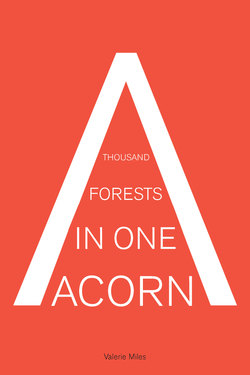Читать книгу A Thousand Forests in One Acorn - Valerie Miles - Страница 15
На сайте Литреса книга снята с продажи.
ОглавлениеRamiro Pinilla was born in 1923 in Bilbao, but the center of his life were the summers he spent in Arrigunaga—a beach on the Biscayan coast bathed in the waters of the Cantábrico—near the town of Gexto. In his recollections, those summers are perceived as the most beautiful of his childhood, when he enjoyed a limitless freedom. Then September would come and with it, the end of happiness: he had to make the trip back to Bilbao and get ready for the start of classes at a seminary. Left behind were the cliffs, the sea, life itself: the beach where, as Pinilla has stated many times, life on earth began.
Later on, now an adolescent, Pinilla discovered that writing was one of the things he liked doing more than anything. To write and to read writers like Charles Dickens and Henry David Thoreau, whose philosophy he identified with right away: like the author of Walden, he too dreamed of living apart from the world, surrounded by nature and far from civilization. He sailed on a trade ship for two years, acquiring a portable Underwood in the Canaries and began writing in earnest.
Back on land in 1944, under the pseudonym Romo P. Girca he published his first book: El misterio de la pensión Florrie, a detective novel inspired by another from that period: Las siete llaves. Some time later, he got an administrative job in the Municipal Gas Company, where he went in the mornings, and another job at a children’s books publisher, where he spent his afternoons writing catch phrases for stickers. Already married and a father to three children, he would steal away for hours at a time to write.
And in that way, in seven months he wrote Las ciegas hormigas, which tells of the bravery and tenacity of Sabas Jáuregui and his family, who, on one stormy night, recover all the coal that a British vessel, run aground on the cliffs of the Cantábrico, had spilled on the rocks. An unadorned, deliberate, and profound style, and an open structure, with divergent voices—these were some of the reasons why in 1960 the novel won the Premio Nadal and, the following year the Premio de la Crítica.
But Pinilla did not relish all the public exposure. He took the award money and ended up building a small house near the Arrigunaga beach, he named it “Walden” and he stayed there, away from commercial activity, publishing with independent publishers and doing all kinds of jobs—from cultivating the land to raising chickens and writing—to sustain a home and three children.
In 2004, the publication of the first volume of Verdes valles, colinas rojas (a nearly 3,000 page trilogy, spanning from 1879 to the rise of the ETA and examining the private and familial microcosms of a city much like Getxo) situated him among the indispensible writers of Spanish literature. The novel received the Premio Nacional de la Crítica, the Premio Nacional de Narrativa, and the Premio Euskadi. Almost ninety years old, Ramiro Pinilla continues to write and expand a body of work destined to become classic.
